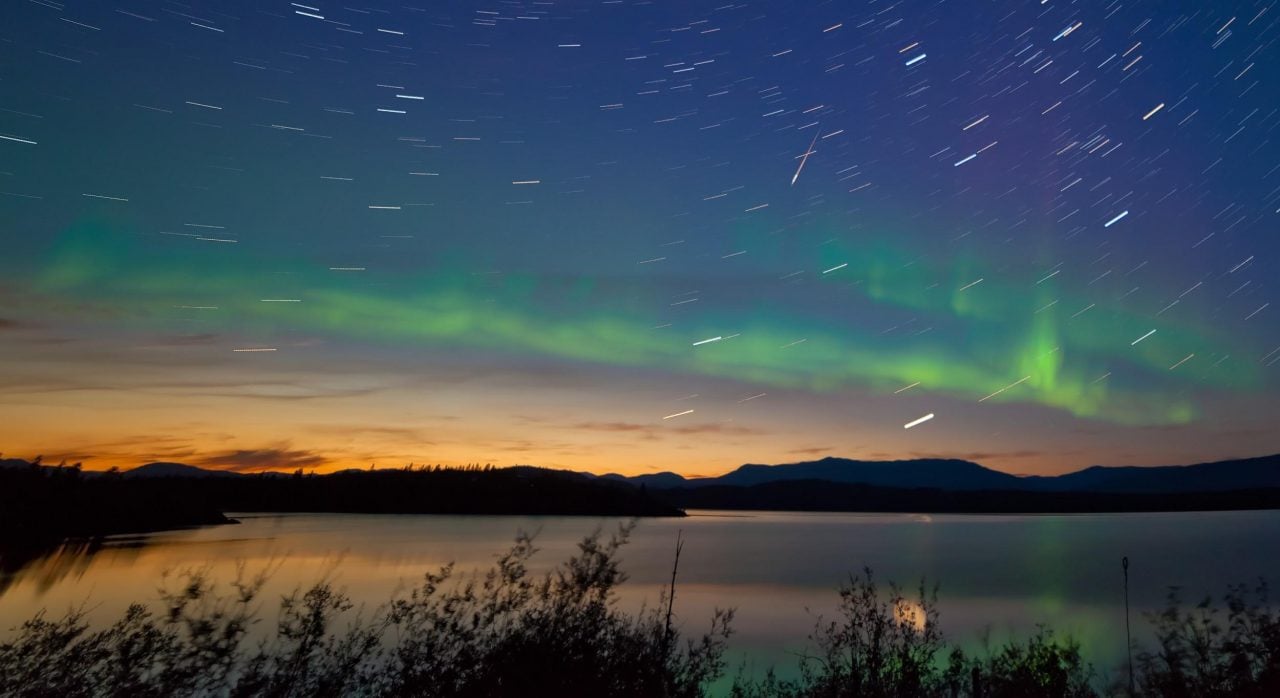
7 Must-See Astronomy Events Happening in April
Let’s hope the notorious April Showers keep far away! April is going to be a big month to get out and go looking at the stars. From close encounters within various planets and our Moon to a full variety of solar system viewing events, there are plenty of April night sky displays to mark on your calendar. Don’t ignore that the Milky Way is rising for the northern hemisphere, so there should be something special to check out every evening.
If you’re searching for one special night to head to a dark sky area, mark your calendar for the night of April 22nd-23rd. On this evening, you can experience the first major meteor shower of the year.
April 4th – Asteroid 9 Metis at Opposition
Seize your telescope for the premier night sky event in April; Asteroid 9 Metis will be at opposition on the night of April 4th. Scientists don’t completely understand the origin of 9 Metis. Still, it’s assumed to be a large remnant of an old asteroid collision. 9 Metis is quite similar in composition to asteroid 113 Amalthea; astronomers believe that these two asteroids are the offspring of a parent asteroid that was approximately the size of 4 Vesta – one of the biggest objects in the asteroid belt.
On the 4th, 9 Metis will be at opposition and well illuminated by the sun from our view. See this asteroid in the constellation Virgo.
April 6th – Conjunction of the Moon & Saturn
As Jupiter and Saturn continue to share the same piece of the sky, it’s not surprising that they both have a conjunction with the Moon in near succession. During April, Saturn appears first; the conjunction will happen in the pre-dawn hours of April 6th. On this morning, the Moon and Saturn (and Jupiter) will emerge near one another in the sky. At their closest, they will be 3°57′ apart, too far for a telescope field of sight but simple enough to jump between the waning crescent Moon and bright Saturn.
April 7th – Conjunction of the Moon & Jupiter
As foretold, the Moon and Jupiter have conjunction quickly after the one with Saturn the next day. The Moon and Jupiter (and Saturn) will be near in the sky in the before-dawn hours. They’ll appear 4°23′ apart at their closest; the point of closest appearance will vary based on your location.
April 17th – Haumea at Opposition
Don’t tear down your telescope yet this month – April 17th has yet another incentive to keep it set up! Dwarf planet Haumea reaches opposition this evening. It will appear clear due to its alignment’s geometry with the Earth and sun.
Haumea is found in the constellation Boötes near bright Arcturus; with the precise equipment, you can utilize the red giant star to star-hop to Haumea. It will attain its highest point around midnight local time, no matter where you are viewing from on Earth.
April 17th – Conjunction of the Moon & Mars / Lunar Occultation of Mars
Arguably the most interesting astronomy event in April happens between the Moon and Mars mid-month. On the evening of April 17th, most of Earth will see when Mars and the Moon have a remarkably close approach: they’ll pass within 0°07′ of one another. This is approximately the same closeness that we witnessed during the Great Conjunction of Jupiter and Saturn in late 2020 and close enough to observe through binoculars.
For a little part of the world, the occurrence will be even greater: the Moon will pass in front of Mars in what’s termed a Lunar Occultation. The Lunar Occultation will only be noticeable to Southeast Asia parts for a short time before Mars appears from behind the Moon. You can look forward to pics from this one, even if you don’t reside in the area where it will be seen.
April 22nd – Peak of the Lyrid Meteor Showers
On the evening of April 22nd-23rd, go outside for a night show in the sky of meteoric proportions. The year’s first significant meteor shower in the northern hemisphere, the Lyrids, will climax on this night. The Lyrids ordinarily produce a Zenith Hourly Rate around 18 on the evening of peak activity.
Notwithstanding their name, look for them from the bright point within constellation Hercules; this will be visible the bulk of the night for stargazers that live in the northern hemisphere. Sadly, a bright, waxing gibbous Moon will prevent a bit of the meteor-spotting opportunities. Nevertheless, it’s still worth traveling out to try and find them if your skies are clear.
April 23rd – Peak of the π-Puppid Meteor Showers
For observers in the southern hemisphere, the following night (April 23rd) is another big night to see ‘shooting stars:’ the π-Puppid meteor shower peaks on the 23rd. Though far less effective than the Lyrids, π-Puppids are fickle. They can be pleasant showers depending on the year.
This year, the radiant point of the π-Puppids will be largest in the sky before twilight. The shower is liable to produce its biggest displays of shooting stars shortly after sundown when the radiant point is as high as possible in the sky.